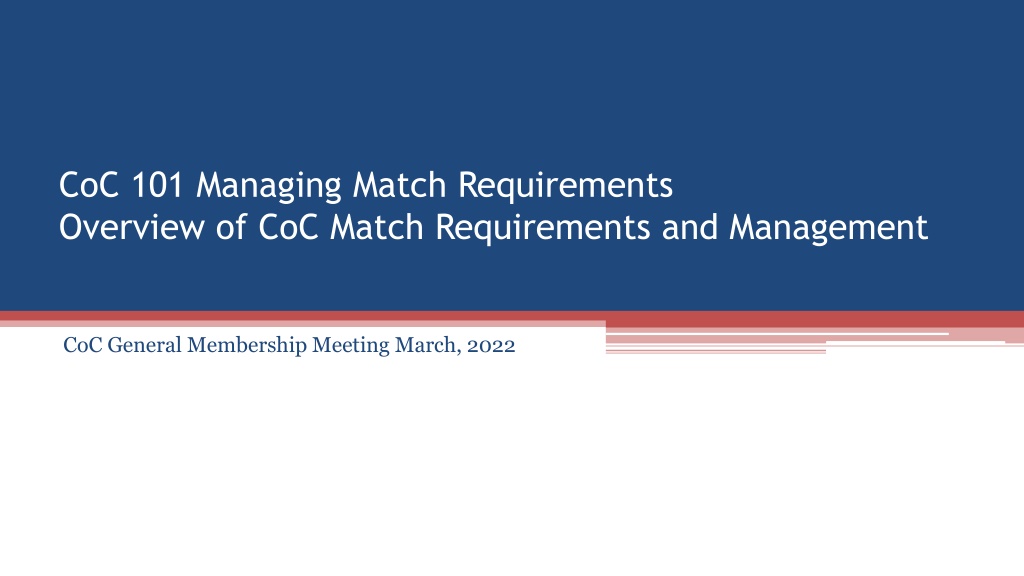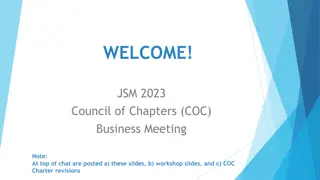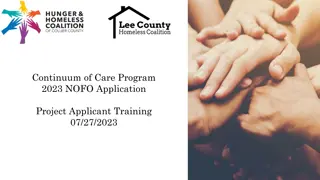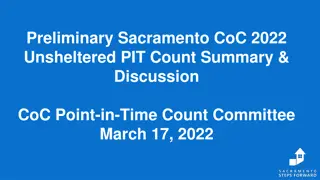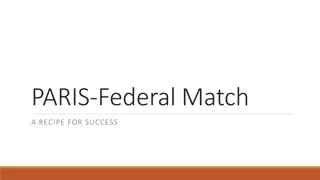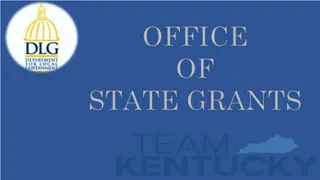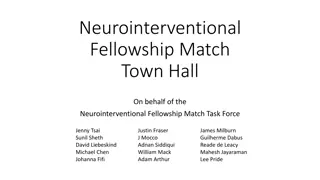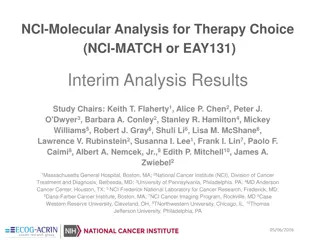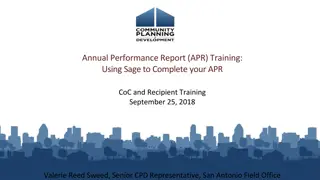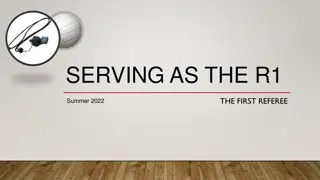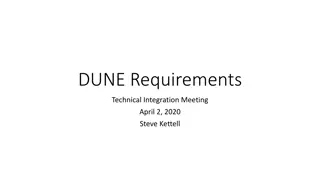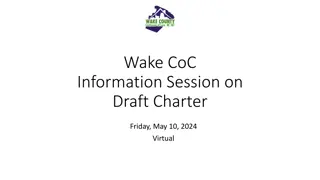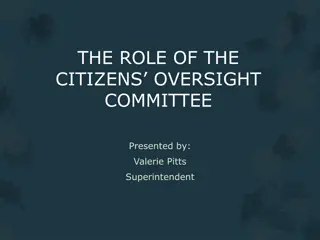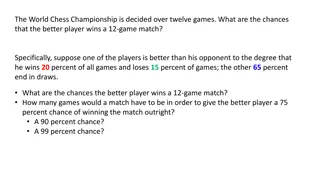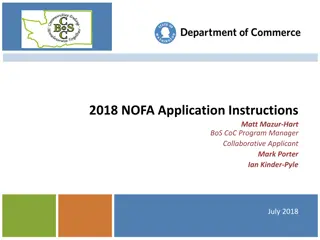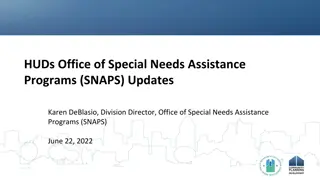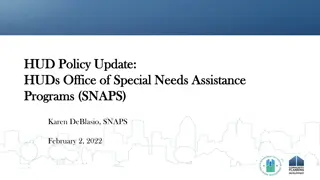Understanding CoC Match Requirements and Management
Exploring the essential aspects of CoC match requirements, including what constitutes as match, basic mandatory requirements, sources of cash for match, and the verification process. Understanding the importance of meeting match requirements for HUD-funded projects is crucial to successful grant management.
Download Presentation

Please find below an Image/Link to download the presentation.
The content on the website is provided AS IS for your information and personal use only. It may not be sold, licensed, or shared on other websites without obtaining consent from the author. Download presentation by click this link. If you encounter any issues during the download, it is possible that the publisher has removed the file from their server.
E N D
Presentation Transcript
CoC 101 Managing Match Requirements Overview of CoC Match Requirements and Management CoC General Membership Meeting March, 2022
Acknowledgments Information taken from several sources 2 CFR Part 200.306 24 CFR 578.73; 578.103.(a)10; 578.97 (b) Material from the HUD Exchange CPD Memos, Notices, and CPD Guide Exhibits HUD CPD Field Office Correspondence
What is Match? Statutory Requirement - Remember CoC Session 1 Act of Congress Non-federal - Share of Cost Read as Non-CoC share* Amount Varies By funding program* Dedicated Used for a specific project (different from leveraging) Form - Cash or in-kind by Applicant or third-party For grant-eligible activities Failure to meet the match is one of the most prevalent HUD monitoring findings
CoC Match Basic Requirements Grantee or subrecipient match is at least 25% all grant funds, except for leasing. (Note: Rental assistance and administration do require match.) CoCs with multiple recipients, match must be met on a grant-by-grant basis; For UFAs or sole grantee, match can be met at CoC level Cash, in-kind by grantee, in-kind by third party Committed in advance using specific documents Different documents for each see samples provided my RTFH Committted to project and available for grant operation period Value of cash and in-kind contributions calculation shown For third party in-Kind, MOUs executed prior to grant agreement execution Changes in match sources amended in writing with HUD prior to being counted toward match Example: agency letter of commitment at time of application, replaced by third party commitment
Basic Requirements, continued Only for eligible activities (meets all RADAR conditions, except for being reimbursable) Identified in application or grant amendment, the 25% does not have to be per activity Must be calculated in accordance with rules Per hour value of personal services; market value of products; etc. Value of any real property, equipment, goods, or services contributed as in-kind match, are eligible in 24 CFR 578, part D Full value of real property can only be taken once Verified annually and at grant completion Records maintained
What cash sources can be used for match? Private funds, such as foundation grants, private contributions Rent paid by tenants (2016 and after) Income from non-project activities (thrift store proceeds, fund raising) Income from program activities must be used for the program but is NOT match Examples: income from vending machines, laundry Other federal programs, unless there is specific statutory prohibition VA restricts some grant activities, check your SSVF grant agreement/contract Allowable in-direct costs, not recovered by the project, up to the approved indirect cost rate Matching funds must be used in accordance with all requirements, except for with ESG the limit in 24 CFR 576.100 does not apply for CoC
What in-kind sources can be used for match? In-kind match: Value of real property, equipment, goods, or services contributed without charge to the CoC project, only if eligible costs under the CoC Program Goods and services from agency or other public or private resources that come to the program Real property used by the project Goods from other divisions of the same agency (thrift store, furnishings) Mainstream resources delivered directly to the eligible participant without a written agreement with the project agency, are not match Public resources dedicated to project participants under an inter-agency agreement Value of contribution is based on established standards (customary fees, market value, documented local typical costs per unit).
Documenting Match Documenting match happens before, during, and after project operations In-kind service requires a different documentation than tangible goods Grantee or subrecipient may use a letter from the partner agency to document the in-kind service in advance of executing a formal MOU but a formal MOU specific to the project is required before grant contract execution The MOU may be between a recipient or a subrecipient and another agency, but the terms must be described in the MOU.
Guides for Monitoring Match HUD-CPD guide Exhibits 29-11; Exhibit 34-1 checklists RTFH CoC Match Guide (2021) RTFH Sample Match Letters for each match type Refer to Approved grant application and Review Term, Conditions and Final Budgets in Technical Submission (C1.9a)
Practices for Maintaining Match Records Same pattern as drawdowns for reimbursable costs Create standardized forms to document time and values of match Maintain evidence of basis for value such as rate of fees for professional services; calculation/allocation of volunteer hours across activities Compile verification documents along with the commitment documents General Ledger/fund accounting for cash
Quiz Time! True or False? A subrecipient is contributing case management services paid for by another source to a CoC project, this is considered cash match. True or False? A CoC project can substitute match from one resource by simply using another resource. True or False? The CoC project budget does not include employment services but provides the service to participants at no cost. This cannot be considered match because it is not in the HUD project budget.
Thank you! Any Questions?
